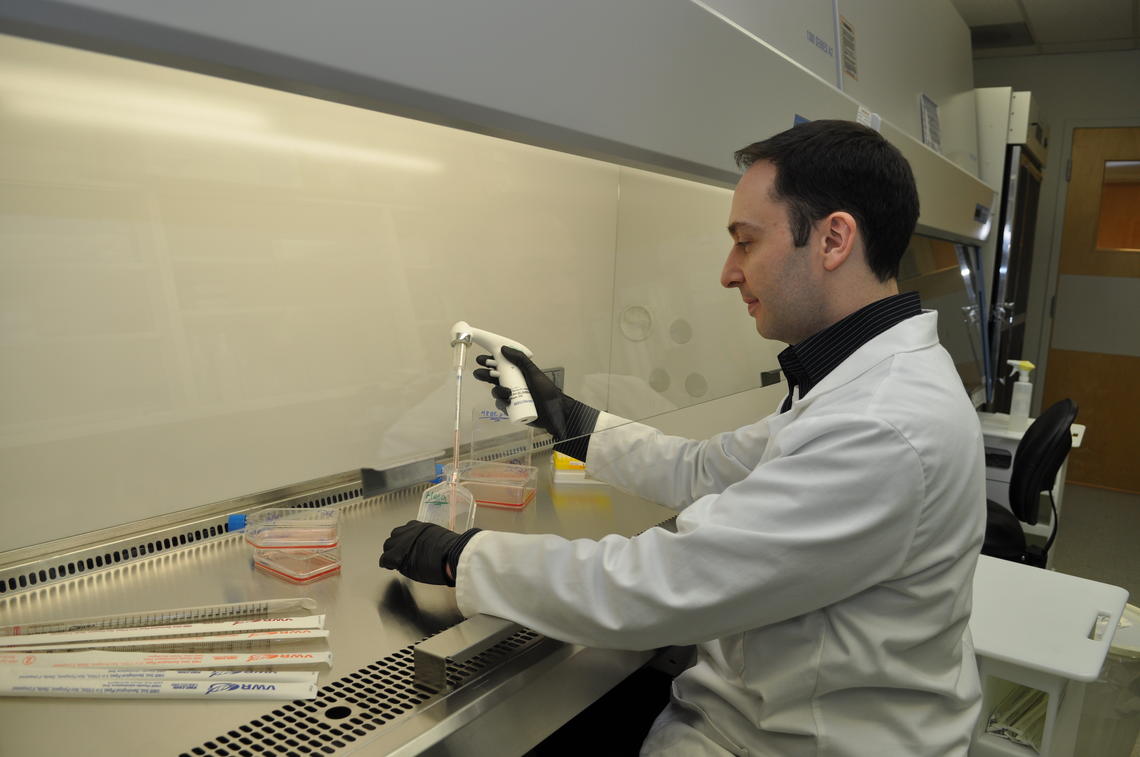Jan. 21, 2014
Calgary cancer researchers volunteer to test their homes for radon

Cancer researchers and clinicians are testing their homes for radon gas this month in an effort to bring awareness to the cancer-causing radioactive gas that could be lurking in the homes of Canadians.
Last year, 25,528 Canadians were diagnosed with costly-to-treat and potentially fatal lung cancer. Although smoking remains the primary cause of lung cancer, between 1,000 and 4,000 new Canadian lung cancer cases each year are thought to be due to radon, which is a naturally occurring colourless and odourless radioactive gas that seeps out of the earth’s crust as uranium breaks down.
“Long-term exposure to radon can lead to lung cancer,” says Amy Elefson, program specialist for environment and health with The Lung Association, Alberta & NWT, making it the leading cause of lung cancer among non-smokers.
Getting a handle on leading cause of cancer among non-smokers
University of Calgary researcher Aaron Goodarzi is exploring several initiatives to help understand and eradicate radon-induced cancer in Alberta, and brainstormed the idea to have Calgary cancer doctors and researchers test their homes, especially their basements, for radon gas levels.
“Radon gas is a significant public health concern for the prairie provinces, in particular, but one which is largely invisible to the public eye. Without question, if you live in a home with high radon, your lungs are being exposed to DNA-mutating radiation which can cause lung cancer even in people who have never smoked a day in their lives,” says Goodarzi, a member of the University of Calgary’s Southern Alberta Cancer Research Institute (SACRI). He also holds the Canada Research Chair in Genome Damage and Instability Disease.
Goodarzi currently has more than 40 cancer researchers and physicians signed up to pick up their radon test kits this week. Because long-term exposure kits provide the most accurate readings, the testing will take about one month. Winter months are the best time to test for radon because homes are typically sealed against the cold, resulting in limited ventilation. It is also the time of year when we spend the most time indoors.

Researcher Dr. Aaron Goodarzi in his University of Calgary lab.
Bruce Perrault
How testing will be carried out
Participants are all volunteers and are paying for their own test kits – which are being sold by a local, certified company recommended by Health Canada. SACRI is covering the cost of shipping these tests to testing laboratories. The company, RadonWest, is providing the data (by first three digits of post code only, so regional but otherwise anonymous) free of charge to SACRI. Goodarzi hopes the preliminary data from this initiative will help secure funding for a larger-scale study to map household radon levels in major Alberta population centres to determine communities most at risk.
Only a small number of homes in Canada test for radon, but a recent Health Canada survey showed that depending on the region, between four and 44 per cent of Canadian homes have levels well above the minimum safe guidelines. The highest levels were found within Prairie and Maritime health regions.
Problem easily corrected but little understood
“High radon gas levels in the home is a correctable problem, and any homes found to have unacceptably high levels of radon gas can be returned to non-hazardous levels relatively easily,” says Goodarzi.
Unless homes are tested, however, most people will not know they have a problem that needs fixing.
The public is encouraged to buy radon testing kits through any certified company, home hardware stores or the Lung Association. These kits will test the home but not be part of the research project.
